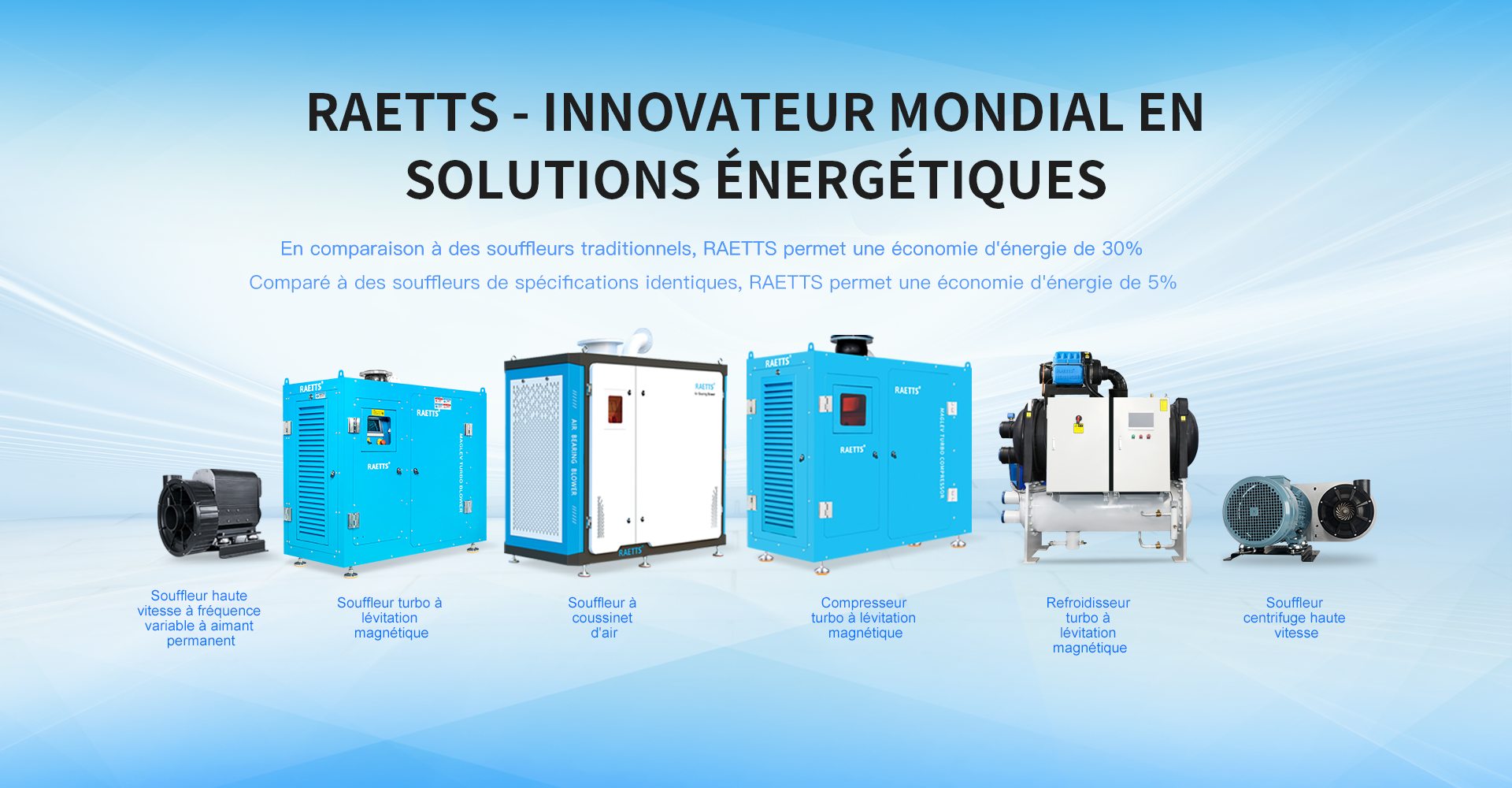In today’s industrial landscape, optimizing system output is crucial for maintaining efficiency and reducing operational costs. One of the key components in many industrial systems is the turbo blower, a device that plays a vital role in various applications such as wastewater treatment, pneumatic conveying, and combustion air supply. This article delves into the intricacies of measuring and optimizing the capacity of turbo blowers, with a particular focus on the offerings and expertise of RAETTS, a leading turbo blower manufacturer.
Understanding Turbo Blower Capacity
Turbo blower capacity refers to the amount of air or gas that the blower can move per unit of time under specific conditions. It is typically measured in cubic meters per hour (m³/h) or cubic feet per minute (CFM). The capacity of a turbo blower is influenced by several factors, including the blower’s design, the pressure differential it can achieve, and the specific requirements of the application it is used for.

At RAETTS, we understand that accurately measuring the capacity of a turbo blower is essential for ensuring optimal performance. Our blowers are designed with precision engineering to deliver reliable and efficient operation across a wide range of industrial applications.
Factors Affecting Turbo Blower Capacity
- Design and Construction: The design of the impeller, the shape of the blower casing, and the materials used all contribute to the blower’s capacity. High-quality materials and innovative designs can significantly enhance performance.
- Operating Conditions: The temperature, humidity, and altitude of the operating environment can affect the blower’s capacity. Adjustments may be necessary to account for these variables.
- System Pressure: The pressure differential that the blower must overcome directly influences its capacity. Higher pressure requirements may reduce the volumetric flow rate.
Measuring Turbo Blower Capacity
To ensure that a turbo blower is operating at its optimal capacity, it is essential to measure its performance accurately. RAETTS employs advanced techniques and equipment to assess the capacity of our turbo blowers, ensuring they meet the highest standards of efficiency and reliability.
Methods for Measuring Capacity
There are several methods for measuring the capacity of a turbo blower, each with its own advantages and limitations. The most common methods include:
- Flow Meters: These devices measure the volume of air or gas passing through the blower. They are available in various types, including thermal, ultrasonic, and differential pressure flow meters.
- Pressure Measurements: By measuring the pressure differential across the blower, it is possible to calculate the volumetric flow rate using the blower’s performance curves.
- Sound and Vibration Analysis: Although not a direct measurement of capacity, analyzing the sound and vibration levels can provide insights into the blower’s operating condition and efficiency.
RAETTS utilizes state-of-the-art diagnostic tools to ensure that our turbo blowers are performing at peak capacity. Our team of experts is equipped to conduct thorough assessments and provide detailed reports on blower performance.
Optimizing Turbo Blower Capacity
Once the capacity of a turbo blower is accurately measured, the next step is to optimize its performance. Optimizing blower capacity involves making adjustments to enhance efficiency, reduce energy consumption, and extend the lifespan of the equipment.
Strategies for Optimization
RAETTS employs several strategies to optimize the capacity of our turbo blowers, ensuring they deliver maximum performance in any application:
- Regular Maintenance: Routine maintenance is essential for keeping blowers in top condition. This includes cleaning, lubrication, and inspection of critical components.
- System Design Adjustments: Modifying the design of the system in which the blower operates can help reduce resistance and improve airflow, enhancing overall capacity.
- Variable Frequency Drives (VFDs): Installing VFDs allows for precise control of the blower’s speed, enabling adjustments to match the specific requirements of the application.
- Upgrading Components: Replacing outdated or worn components with high-efficiency alternatives can significantly boost blower performance.
RAETTS offers comprehensive support and services to help our clients optimize the performance of their turbo blowers. Our team of engineers works closely with customers to identify opportunities for improvement and implement effective solutions.
RAETTS: Your Partner in Turbo Blower Excellence
With years of experience and a commitment to innovation, RAETTS has established itself as a leader in the turbo blower industry. Our products are renowned for their quality, reliability, and efficiency, making them the preferred choice for industries worldwide.
At RAETTS, we believe that understanding and optimizing turbo blower capacity is key to achieving operational excellence. Our comprehensive range of products and services is designed to meet the diverse needs of our clients, ensuring they receive the best possible solutions for their specific applications.
Our Commitment to Quality
Quality is at the heart of everything we do at RAETTS. From the initial design phase to the final product, we adhere to strict quality control standards to ensure our turbo blowers meet the highest industry benchmarks.
Our commitment to quality extends beyond our products. We provide exceptional customer support, offering expert advice and assistance to help our clients achieve optimal performance from their turbo blowers.
Conclusion
Measuring and optimizing turbo blower capacity is a critical aspect of maintaining efficient and cost-effective industrial operations. By understanding the factors that influence capacity and employing effective measurement and optimization strategies, businesses can enhance their system performance and reduce energy consumption.
RAETTS is dedicated to helping our clients achieve these goals. With our expertise in turbo blower technology and a commitment to quality, we provide the solutions and support needed to ensure optimal blower performance in any application.
For more information on our products and services, or to discuss your specific turbo blower needs, please contact RAETTS today. Our team of experts is ready to assist you in achieving the highest levels of efficiency and reliability for your industrial systems.
In conclusion, optimizing turbo blower capacity is not just about improving performance; it’s about creating a sustainable and efficient future for your operations. Trust RAETTS to be your partner in this journey towards excellence.




